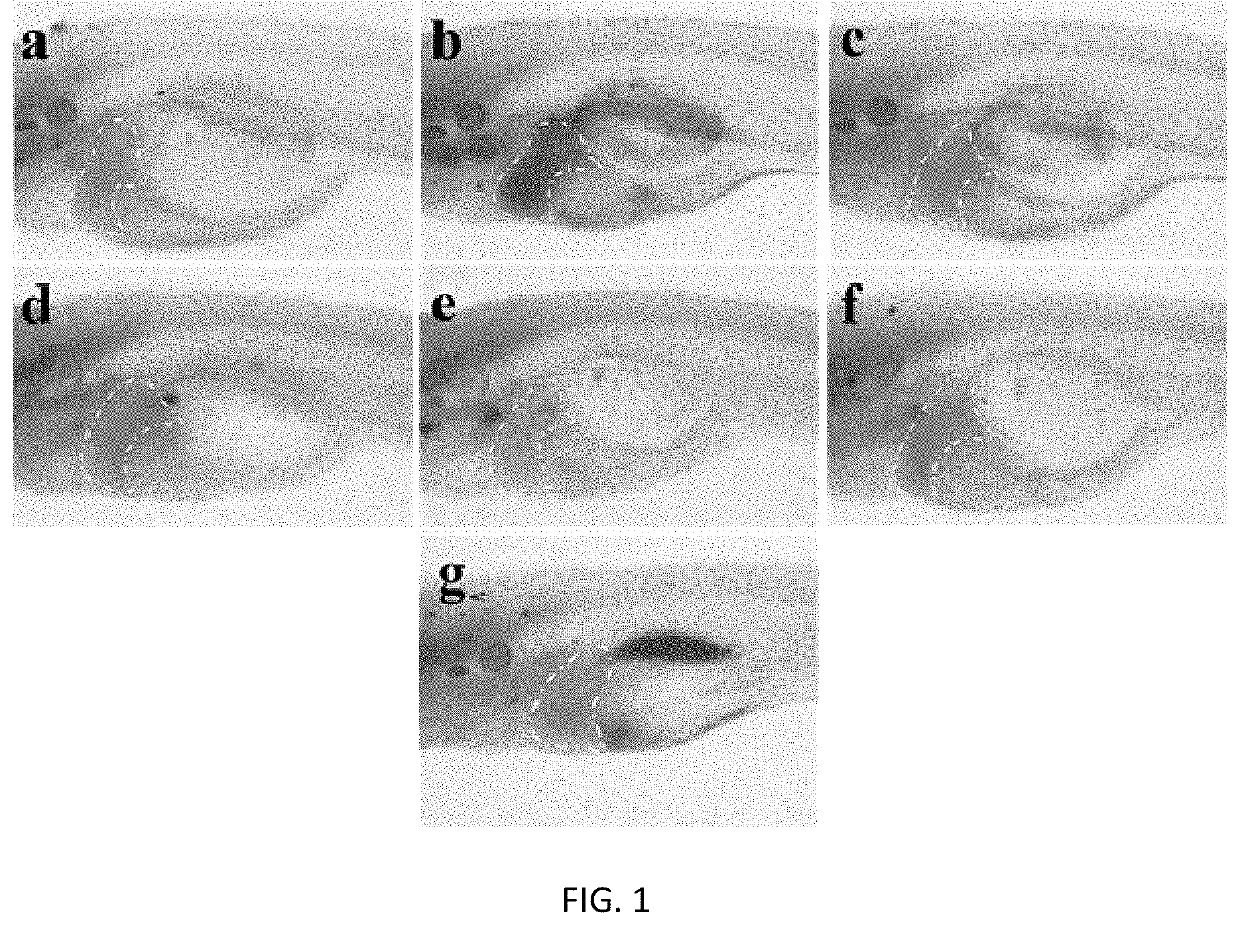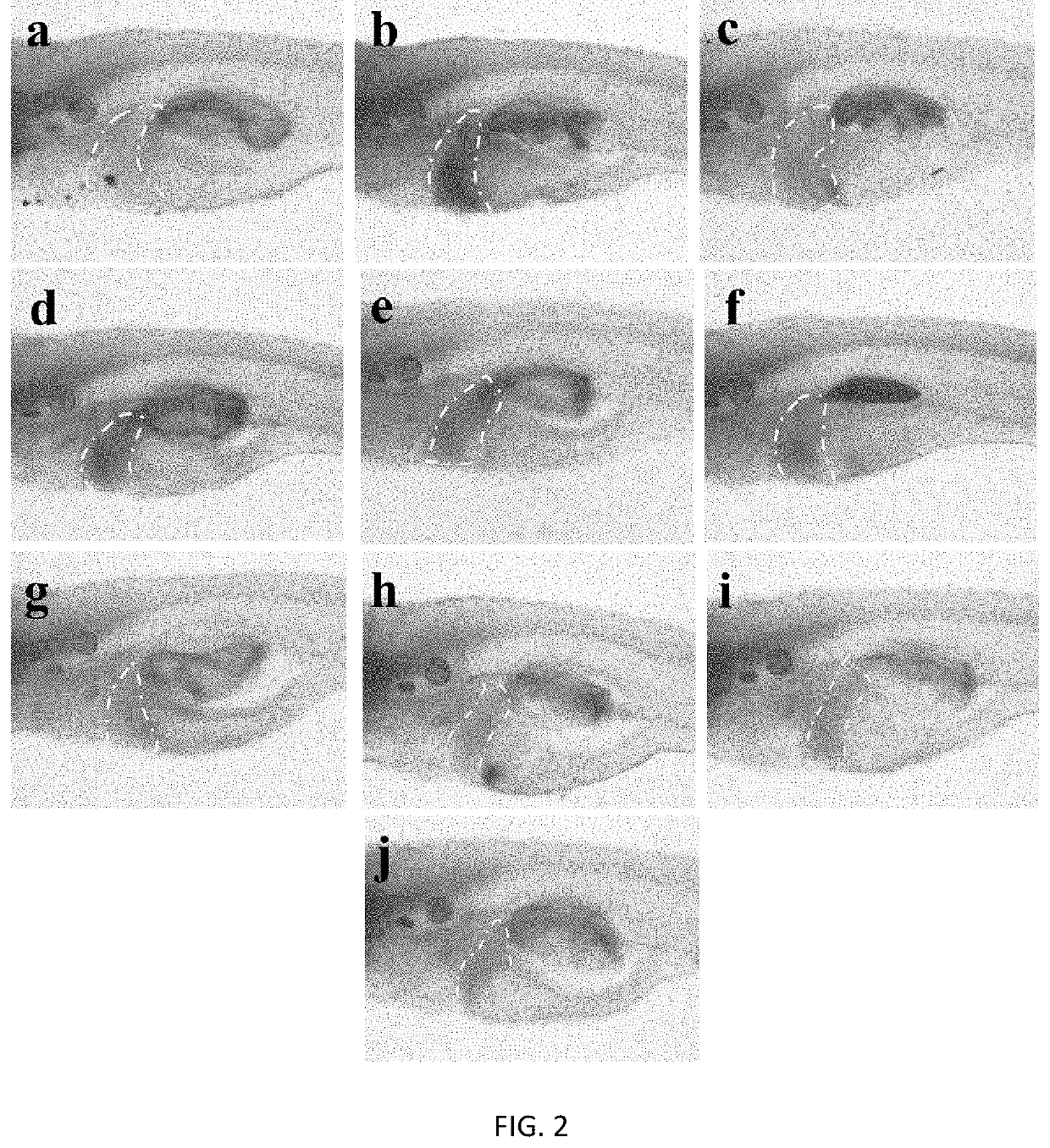Compound for treatment or prevention of liver diseases
a technology for liver disease and compounds, applied in the field of medicinal chemistry, can solve the problems of complex pathogenesis, inability to fully explain the pathogenesis, and increase the level of ffa in plasma, so as to improve the absorption efficiency of drugs, improve the related therapeutic effect, and improve the solubility of compounds of the present invention in different solutions.
- Summary
- Abstract
- Description
- Claims
- Application Information
AI Technical Summary
Benefits of technology
Problems solved by technology
Method used
Image
Examples
example 1
of 2-{8-hydroxy-3-(4-hydroxy-3-methoxyphenyl)-2-hydroxymethyl-2,3-dihydrobenzo[b][1,4]dioxan-6-yl}chroman-3,4,5,7-tetraol (4)
[0121]
[0122]Step A: A mixture of 4-hydroxy-3-methoxybenzaldehyde (2.0 g, 13.1 mmol), ethoxyformylmethylene triphenylphosphine (5.04 g, 14.5 mmol) and dichloromethane (40 mL) was stirred overnight at room temperature. The solvent was evaporated under reduced pressure, and the product was purified by column chromatography (200-300 mesh silica gel, ethyl acetate:petroleum ether=1:20-1:10 elution) to give ethyl 3-(4-hydroxy-3-methoxyphenyl)acrylate (1) (2.5 g). The yield was 85.9%.
[0123]Step B: At −50° C., to a solution of compound 1 (2.48 g, 11.2 mmol) in THF (25 mL) was added dropwise a solution of 1.5 M diisobutylaluminum hydride in THF (25 mL). After the addition, the temperature was raised to room temperature and stirring was continued for 0.5 hour. The reaction solution was poured slowly into ice water (40 mL), and the pH was adjusted to 5-6 with 2 M citric ...
example 2
of (2R,3S)-2-{(2R,3R)-3-(4-hydroxy-3-methoxyphenyl)-2-hydroxymethyl-2,3-dihydrobenzo[b][1,4]dioxan-6-yl}chroman-3,4,5,7-tetraol (5)
[0126]
[0127](2R,3R)-3,5,7-trihydroxy-2-((2R,3R)-3-(4-hydroxy-3-methoxyphenyl)-2-hydroxymethyl-2,3-dihydrobenzo[b][1,4]dioxan-6-yl}chroman-4-one (purchased from Shanghai Dibo Biotechnology Co., Ltd., production batch number EE09) was used as a raw material to synthesize compound 5, the experimental operation was performed in accordance with the preparation method of step D in Example 1. 1H NMR (DMSO-de, 400 MHz) δ 9.28-9.14 (s, 3H), 7.02-6.79 (m, 6H), 5.88-5.87 (m, 1H), 5.70-5.69 (m, 1H), 5.58 (s, 1H), 5.20 (s, 1H), 4.95-4.88 (m, 2H), 4.72 (s, 1H), 4.64-4.60 (m, 1H), 4.14 (s, 1H), 3.80-3.75 (m, 4H), 3.54 (s, 1H), 3.36-3.28 (m, 1H). MS (EI, m / z): 483.2 [M−H]−.
example 3
of (2R,3S)-2-{(2R,3R)-3-(4-hydroxy-3-methoxyphenyl)-2-hydroxymethyl-2,3-dihydrobenzo[b][1,4]dioxan-6-yl}chroman-3,5,7-triol (6)
[0128]
[0129]To a solution of compound 5 (103 mg, 0.213 mmol) in acetic acid (3 mL) was added sodium cyanoborohydride (50 mg, 0.796 mmol) in portions. After the addition, the resulting mixture was stirred at room temperature for 0.5 hour. After adding water (10 mL), ethyl acetate (15 mL×3) was used for extraction, the combined organic phase was washed with saturated sodium bicarbonate solution (10 mL), and dried over anhydrous sodium sulfate. The solvent was evaporated under reduced pressure, and the product was purified by column chromatography (200-300 mesh silica gel, ethyl acetate:petroleum ether=5:1 elution) to give (2R,3S)-2-{(2R,3R)-3-(4-hydroxy-3-methoxyphenyl)-2-hydroxymethyl-2,3-dihydrobenzo[b][1,4]dioxan-6-yl}chroman-3,5,7-triol (6). 1H NMR (DMSO-d6, 400 MHz) δ 9.20 (s, 1H), 9.14 (s, 1H), 8.95 (s, 1H), 6.99-6.78 (m, 6H), 5.89 (d, J=2.0 Hz, 1H), 5.7...
PUM
 Login to View More
Login to View More Abstract
Description
Claims
Application Information
 Login to View More
Login to View More - R&D
- Intellectual Property
- Life Sciences
- Materials
- Tech Scout
- Unparalleled Data Quality
- Higher Quality Content
- 60% Fewer Hallucinations
Browse by: Latest US Patents, China's latest patents, Technical Efficacy Thesaurus, Application Domain, Technology Topic, Popular Technical Reports.
© 2025 PatSnap. All rights reserved.Legal|Privacy policy|Modern Slavery Act Transparency Statement|Sitemap|About US| Contact US: help@patsnap.com



